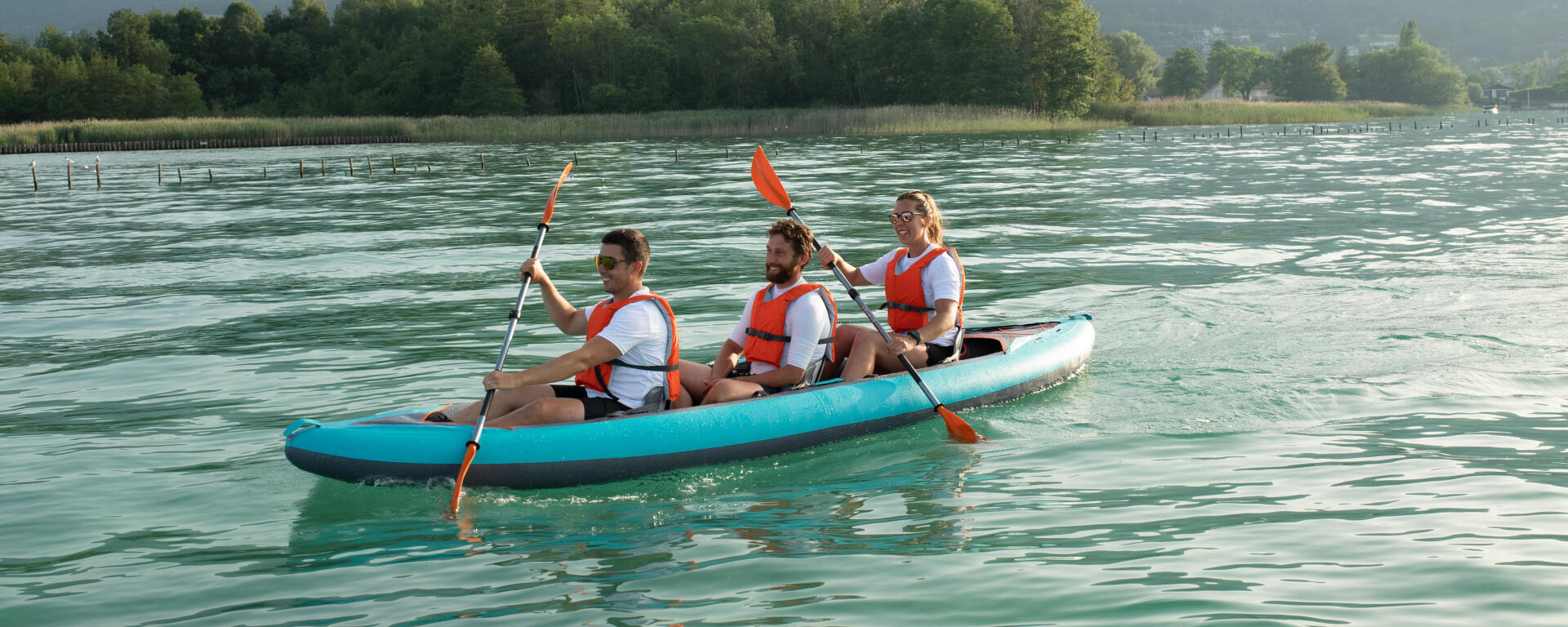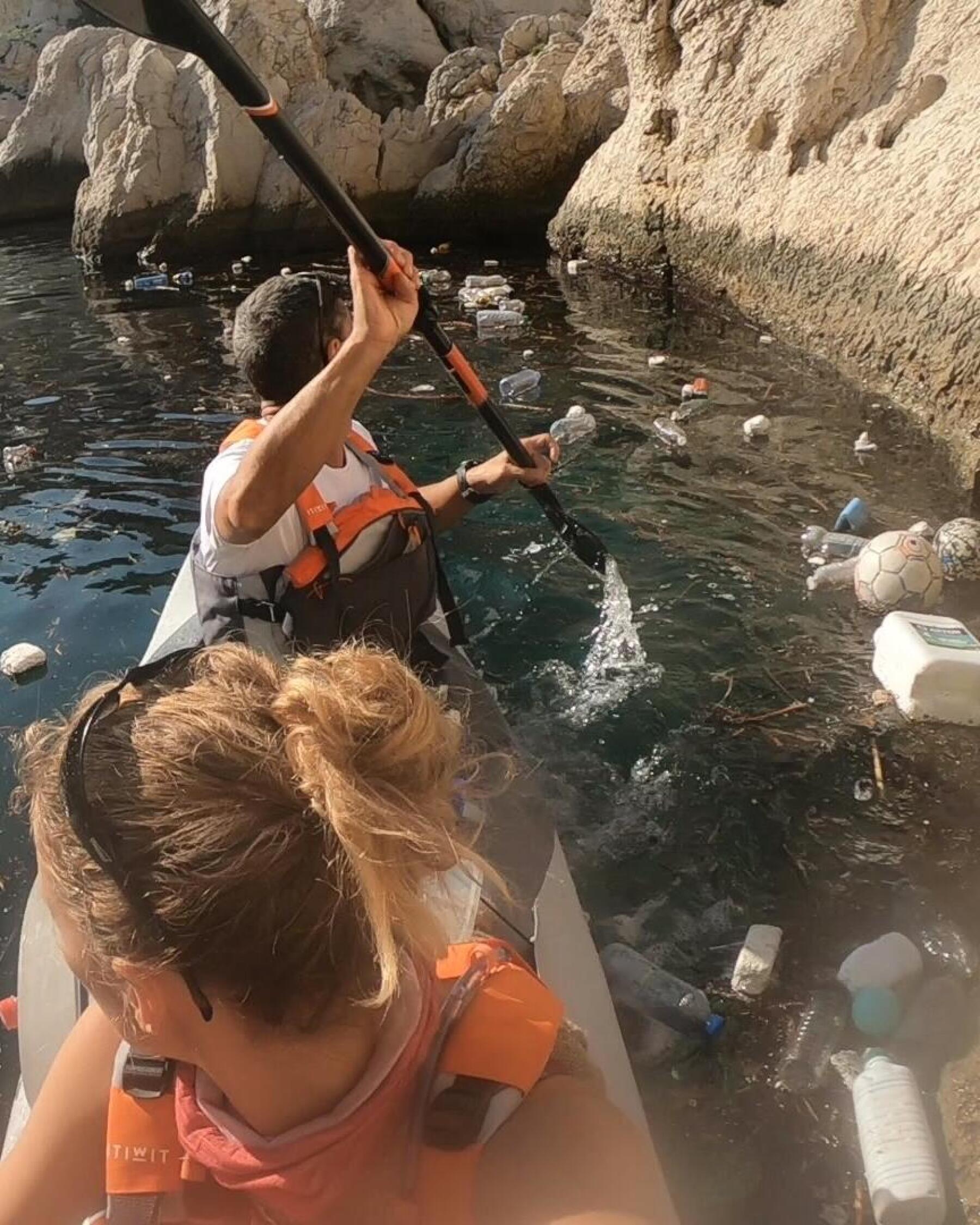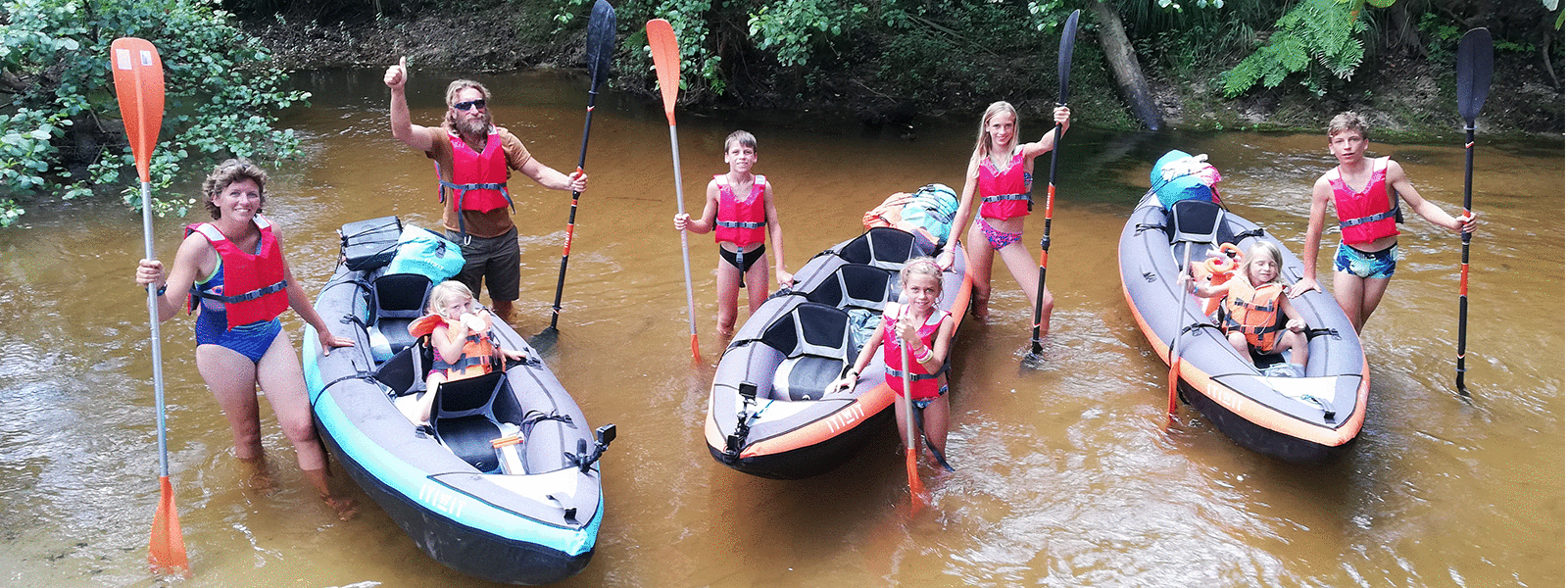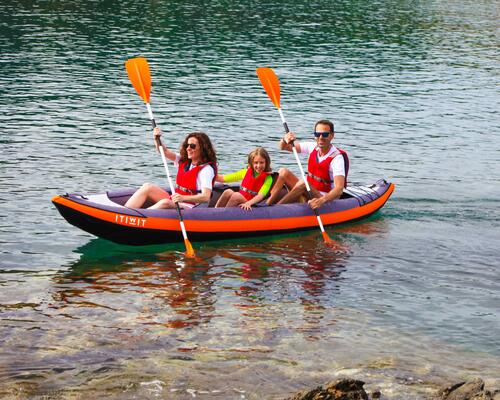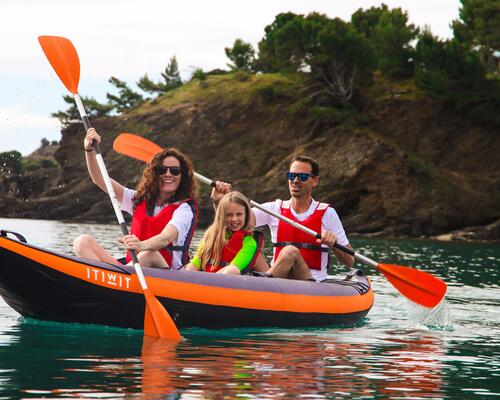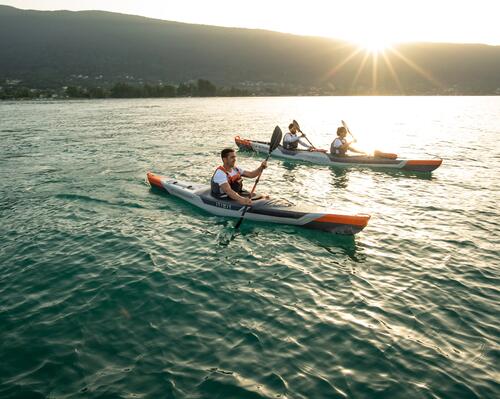#7 French rivers and lakes: the great classics.
There's no need to get on a plane to go searching elsewhere for what we have on our doorstep. Because France is in fact home to some of the most beautiful rivers in the world! This non-exhaustive list presents not only the most beautiful, but also the most accessible to a wide audience. We are talking about Grade 1-2 routes here. If you are eyeing up a Grade 3 route, tackle it with a club or company, because you are pushing the limits of touring canoeing/kayaking.
The Allier: France's wildest river.~Like its sister, the Loire, of which it is the main tributary, the Allier is considered to be one of the last great “wild” rivers in Europe. The description is valid for almost the entire 425 km of navigable waterway. In its upper third (Allier Supérieur and Haut Allier), "wild" refers to the liveliness of the rapids as well as the feeling of isolation you get inside the gorges. After Brioude, the river becomes free to meander and spread out. Then in its last third, an abundance of flora and fauna adds to the remoteness of the surroundings. Want to paddle away from civilization? See you on the Allier.
Wild Alsace.~Paddling paradise may not be where you think! The Alsatian "Grand Ried" harbours a multitude of hidden little rivers that have freedom written all over them. Recommended routes: Ill (Colmar / Sélestat et Sélestat / Huttenheim), Brunnwasser, Rhin Tortu, Strasbourg loop.
The Ardèche: canoeing mecca.~With its 200,000 paddlers every year, the Ardèche is undoubtedly the temple of canoeing. The beauty of its gorges attracts tourists from all over Europe, even going so far as causing traffic jams on the river on certain spring weekends! But the most famous French river is not all about its classic 35-km route. Upstream of the gorges, 25 km of lesser-known trails go through some of the most beautiful villages in France.
The Dordogne: the ultimate canoe-camping destination.~If the Ardèche is the temple of canoeing in France, the Dordogne is undoubtedly that of canoe camping. From the Massif Central to the ocean, it meanders through some of the most beautiful scenery in France. For a few hours or a few weeks, countless routes allow you to dive into an impressively rich and diverse natural and cultural heritage: hilltop castles, prehistoric caves, impressive belvederes and a long list of villages ranked among the most beautiful in the country. A combination of everything that gives French tourism its international reputation.
The Loire: the royal river.~The Loire is the river of all superlatives. The longest, most illustrious and wildest of all of France's rivers. This river, famous throughout the world for its castles, has somehow slipped under the canoe-camping radar and sees few paddlers. However, few routes in France offer such a range of characters and scenery, such a blend of wilderness and human heritage. Almost all of its 1013 km length is navigable.
The Loue: the jewel of Franche-Comté.~The Loue is one of the most beautiful canoe and fishing destinations in eastern France. Spectacular from its source, it offers paddlers a beautiful, varied and fun trip. It winds its way through wilderness and stunning villages, with lots of little weirs thrown in to keep things interesting. Navigable for 120 km to its confluence with the Doubs, its upper section between Mouthier Haute-Pierre and Quingey (50 km) is the most interesting part.
The Tarn: stuff of legends.~The Gorges du Tarn need to be on your list of must-paddle routes. Few rivers offer such an easy route in a breathtaking setting. For 53 km, the emerald-coloured waters meander through limestone cliffs towering up to 500 m high. Each village you go through is a reminder of the many legends linked to the valley: nymphs, miraculous healing, enchantments... A spellbinding journey in simply spectacular natural surroundings.
The Ain: a little bit of Canada just outside Lyon.~Between its Jurassic limestone source and the Rhône, the Ain is canoeable for 200 km—almost its entire length. From its wild upper section where it flows through the Jura, it is tamed over nearly 80 km by a succession of weirs that have reshaped the landscape. It regains its freedom from Pont-d'Ain, with a 35-kilometre route popular with paddlers from neighbouring Lyon.
The Chassezac: the pearl of the Ardèche.~Waves, breathtaking gorges, a magical forest... The Chassezac is a little gem that has nothing to envy its big sister, the Ardèche. It's all there, just smaller! In summer, the prettiest swimming spots can be reached by canoe. When the dam releases, you get all the thrills in an enchanting setting.
The Drôme: stunning colours.~Tucked away between Vercors and Provence, the Drôme is one of the few French rivers that can be paddled all year round. From Die to the Rhône, 54 km of easy trails weave their way through vineyards and mountains. Its emerald colour is almost unique in France. You will fall in love! Note that the Drôme hosts the Open Canoe Festival each year, the largest European gathering dedicated to canoe touring.
The rise and fall of the Gardon.~Spectacular. Wild. Formidable. The Gardon is one of those forgotten rivers living in the shadow of the Ardèche. Famous for its beautiful Roman bridge, it is now also infamous for its devastating mood swings, which now haunt the memory of the local population. Its canoe trail is a must for lovers of wilderness.
The Hérault: Garrigue gold.~Between Ganges and Saint-Guilhem-le-Désert, the Hérault has several sections for canoe touring, each with varying or even totally different characters. Once out of the upper section shared with bathers, the section downstream of the Moulin de Bertrand dam feels remote and exotic. All the way along the route, the river reveals a whole host of surprises and wonders.
The lovely Leyre~If I was to say "Landes": what probably comes to mind are lines and lines of planted pines. The Leyre will change your mind. Connecting the Landes de Gascogne Regional Natural Park to Arcachon Bay, it snakes through more than 90 km under a canopy of greenery, a privilege reserved for canoeists visiting what is one of the richest natural heritage sites in the south-west of France.
Marais Poitevin: "Green Venice".~The second largest wetland in France after the Camargue, Marais Poitevin has 4000 km of canals spread across three departments. The “Green Venice” area has to be its most amazing part. Everything is so harmonious that it is hard to believe that this place is a purely human creation. A journey through an aquatic labyrinth where nature unfurls its green carpet.
The Orb rush.~Wild and unspoiled nature, beaches you will never want to leave, first-class rapids: the Orb is a "must" for canoe touring. It is also the perfect location for clubs looking for an introduction to white water. Before and after summer, this river takes on an unexpected atmosphere!
The Sorgue: the rapids of Provence.~Have you ever dreamed of paddling on a giant spring where the water is so clear that you feel like you are floating on thin air? This dream is reality and it has a name: the Sorgue. A haven of cool at the heart of sweltering Provence, a mysterious cornucopia of exuberant colours, a natural beauty offering a captivating and inspiring canoeing experience.
Lake Annecy: the Alpine lagoon.~Blue water underneath and mountains all around: it sometimes feels like you're at sea! Canoeing on Lake Annecy offers a multitude of very different atmospheres. Whether you are more of a city kid or the outdoorsy type, you will fall in love with the colour of the water, which is worth the trip in and of itself.
Lake Bourget: nature and poetry.~Hidden between the Alps and the Jura, Lake Bourget still has some wild spots that are perfect for discovering by canoe or sea kayak.
Lake Salagou: water on Mars!~An impressive collaborative effort between man and nature, Lake Salagou has some unusual landscapes to offer. An opportunity for a contemplative paddle on an artificial lake that looks like it has been there since time began.
Verdon lakes: for your eyes only.~Less well known than the magnificent Verdon Gorge, which is only suitable for hikers and expert kayakers, the Verdon lakes still have a few interesting trails that have not been flooded by the dams. Sometimes impressive, often short, they captivate paddlers for one reason that is enough to justify the journey: the colour of the water.

